The Checker Maven
The World's Most Widely Read Checkers and Draughts Publication
Bob Newell, Editor-in-Chief
Published every Saturday morning in Honolulu, Hawai`i
Noticing missing images? An explanation is here.
Send in the Marines

When a rapid response is needed in times of crisis, we often hear the expression, "Send in the Marines!" And indeed, the United States Marines are renowned for their ability and willingness to take on tough problems and solve them quickly.
This month's speed problem doesn't require a rapid response force of the military kind, but does indeed require quick wits and checker skill. It's a problem that mid-20th century checker great Millard Hopper demonstrated to members of the United States Marines while Mr. Hopper was on a USO tour during World War II. The Marines learned to solve it; can you?
Ten seconds on our Javascript clock is all we're giving you, so snap to attention and take off at double time!
June Speed Problem (easy)
Check your solution by clicking on Read More, and that's an order, checker player!![]()
A Checker Hutzler

We're not personally acquainted with any modern-day checker analogue to the traditional pool hustler, but we know for sure that, at least in times past, such a thing did in fact exist, and no doubt exists somewhere today. Old Bennie Newell himself (your editor's grandfather) hustled checkers in his tavern in Newark, New Jersey, many decades ago, and there certainly were many others.
We don't know if the author of today's problem, a checkerist of yore named Henry Hutzler, was a hustler in anything but homonymous surname, but his composition makes a fitting entry for our Checker School series. It's deceptively simple, though not as hard as some others, and most of all, it's eminently practical and it or its like turns up in many an over-the-board contest.
BLACK
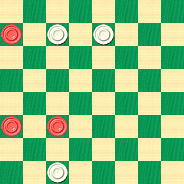
WHITE
White to Play and Win
W:W6,7,30:B5,21,22.
Forces are even, but White has a recognizable positional advantage. Is it enough to win? Mr. Hutlzer says it is, and no doubt he would have been willing to bet on it. What do you say? Make your call and then prove it before clicking on Read More to see the solution, a sample game, explanatory notes, and a most interesting quotation.![]()
A Bit Too Advanced
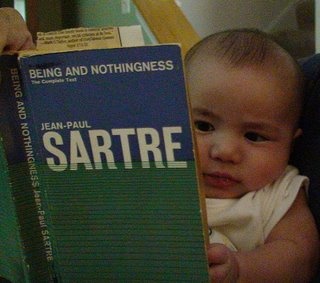
Sartre's L'Être et le Néant is a bit too advanced for most folks, let alone for the reader pictured above. We feel that there is an apt analogy to some stroke problems, which seem every bit as complex as the French philosopher's famous work on l'ontologie phénoménologique. This month's selection certainly can be described as complex; or again, making further reference to the existentialist canon, perhaps incomprehensible.
Fortunately, you can try out our problem without need for a French to English translation.
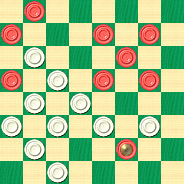
WHITE
White to Play and Win
W:W30,25,24,23,22,21,18,17,14,9:BK27,16,15,13,11,8,7,5,1.
Can you find the answer, or does it all come to nothing? We posit, however, that a solution indeed exists, and that it can be definitively determined by clicking on Read More.![]()
Elegance and Style

Little can match British architectural style and elegance as demonstrated in the photo above. Neither too simple nor too complex, blending historical charm with enduring utility, we can't help but be impressed. Yet in the world of draughts, for something comparable we always turn to the American master of checker problem elegance and style, Tom Wiswell. This week's offering is neither too difficult nor too easy, and combines charm and style with practicality and instructiveness. It's a tour-de-force of which few other than Mr. Wiswell would be capable. Here's the position.

WHITE
White to Play and Win
W:W13,31,32:B4,21,28.
Try your hand at this one, and then click on Read More for the solution and explanatory notes. Take your time and enjoy it to the fullest; it's sheer elegance on the draughts board.![]()
A Real-Life Checker Problem

Our photo above shows a real-life family enjoying a game of checkers, and in recognition of all the recreational checkerists out there, this month we've selected a simple speed problem drawn from real-life play. We've taken a position occurring in a game that took place on the GoldToken internet site; it shows the winning player taking advantage of an error that sets up a nice little play.
We think ten seconds is enough time to find the win. Click on the link below to show the problem and start our real-life clock.
March Speed Problem (easy)
Got it? Click on Read More to find the solution for real.![]()
The Devil and the Deep Blue Sea

We have to admit that last month's Fausto Dalumi problem was well into the "difficult" category. So this month, we'll feature a problem that is a little less strenuous. It was originally published under the theme "The Devil and the Deep" and we think you'll see why when you arrive at the solution.
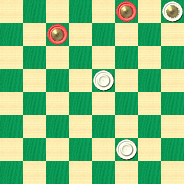
WHITE
White to Play and Win
W:W27,15,K4:BK6,K3
We don't think this problem will sink you, but if you find yourself bedeviled, just click on Read More and the solution will surface.![]()
Saving the Game

In this month's lesson in our ongoing Checker School series, we learn a valuable lesson in saving the game; in other words, looking for a way to draw even when our position doesn't appear to have too many chances. Here's the position:
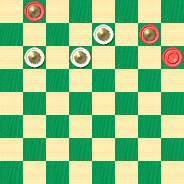
BLACK
Black to Play and Draw
B:WK26,K24,K23:BK32,K25,21.
This situation, attributed to a J. Cornock, does indeed look tough for the Black side, who have little mobility and a very narrow choice of moves. Yet, one of them is good enough to save the draw. Can you find it?
Give it a try but don't forget, you can always save time and frustration by clicking on Read More to see the solution, with detailed notes and a sample game.![]()
Faster Than Greased Lightning
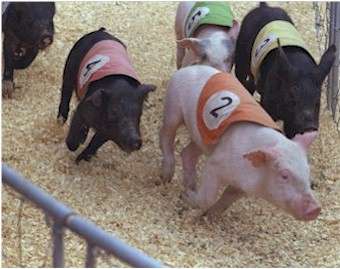
Our first set of speed problems for the year are truly worthy of the title. They both fall decidedly into the "easy" category, but as we know our readers enjoy a challenge, we're setting the time limits at record lows--- five seconds for the first problem and ten seconds for the second! We think this should satisfy everyone. Advanced players can try to sight-solve the problems in the rather strict time limits allotted. Less experienced players can simply look for the solutions and ignore the clock (well, yes, that is easier said than done).
Are you ready? Click below to start each problem--- faster than greased lightning!
February Speed Problem No. 1 (five seconds)
February Speed Problem No. 2 (ten seconds)
When you're finished, slide your mouse over and zap Read More to see the solutions.![]()
What's Your Call?
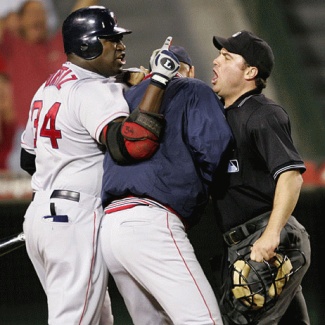
In the world of sports, sometimes a play is a really close call and quite an argument about it takes place. Today's checker problem surely falls into that category. Take a good look at the position below, with White to move. How would you call this one? White win, Black win, or draw? Show it to your checker friends and you're bound to generate a lot of, shall we say, animated discussion (we'd hate to accuse checker players of having heated arguments, after all).
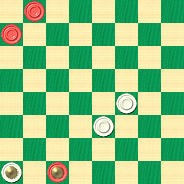
WHITE
White to Play, What Result?
W:WK29,23,19:BK30,5,1.
Make the call, and then do an "instant replay" to demonstrate the correctness of your decision. We'll just give you a bit of fair warning: this one isn't so easy, and just may surprise you. What do you say?
There's one call, though, we can always make without error: it's a certainty that clicking on Read More will bring you to the solution.![]()
The Bizarre World of Strokes

We haven't run a "stroke" problem in a little while, though it's something we like to do for the sake of variety on the first Saturday of some months. Today we return to that theme, and present a problem that was considered "easy" by the author.
Much as the photo above represents the bizarre side of architecture, stroke problems are certainly the bizarre side of the world of checkers. You either love them or hate them, and we think that depends in no small measure on whether you're able to solve them. Stroke problems call upon your ability to visualize long, forced series of moves. They are an excellent test of your skills, but seldom, if ever, an exercise in practical play.
So here's our so-called "easy" problem.
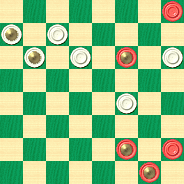
WHITE
White to Play and Win
W:WK5,6,K9,10,12,19:B4,K11,K27,28,K32..
Could you find your way through, or is all simply too bizarre? Whatever your result, click on Read More to see the "easy" solution. Did we say "easy"? You may or may not agree!![]()
The Checker Maven is produced at editorial offices in Honolulu, Hawai`i, as a completely non-commercial public service from which no income is obtained or sought. Original material is Copyright © 2004-2026 Avi Gobbler Publishing. Other material is public domain, AI generated, as attributed, or licensed under CC1, CC2, CC3 or CC4. Information presented on this site is offered as-is, at no cost, and bears no express or implied warranty as to accuracy or usability. You agree that you use such information entirely at your own risk. No liabilities of any kind under any legal theory whatsoever are accepted. The Checker Maven is dedicated to the memory of Mr. Bob Newell, Sr.

